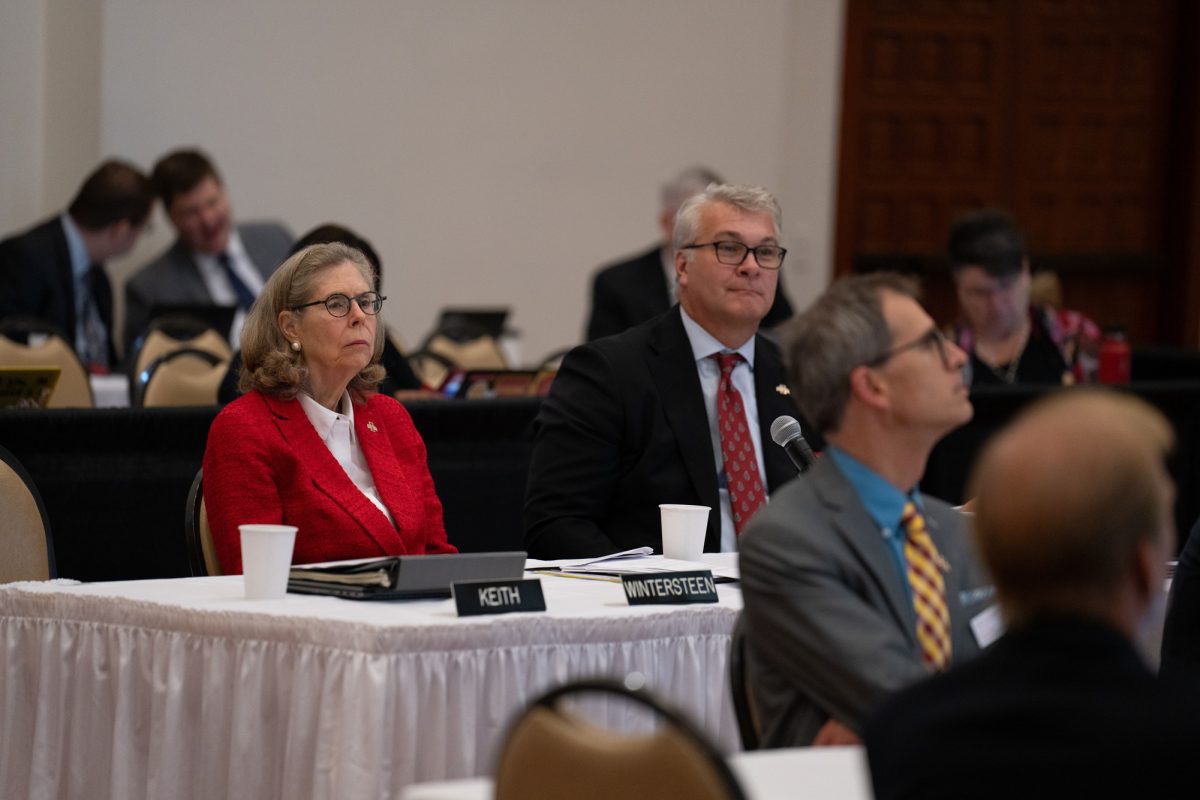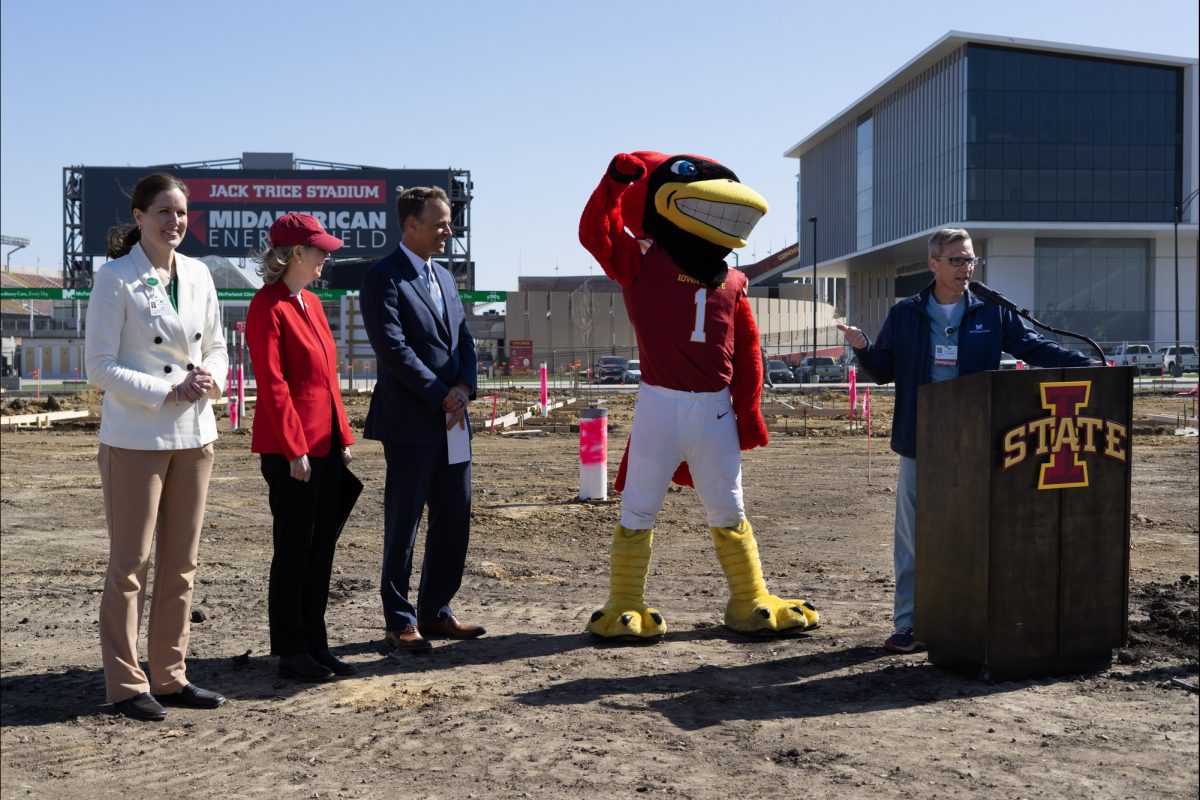Educators and faculty predict enrollment increases with the implementation of the Degrees of the Future Initiative.
Approved as part of Iowa State’s 2023-24 strategic plan, President Wendy Wintersteen has put forth $10.5 million to jump-start each project. One project, Degrees of the Future, received $1.5 million.
The additions to the degree programs offered by the university are underway with positive responses from faculty.
Six new degree programs are described as “academic degrees that meet student and employer demand,” according to the funding announcement. Programs will include:
- MA, digital health
- MA, finance and technology (FinTech)
- BA, digital storytelling
- BA, game design
- BA, integrated health sciences
- BA, precision agriculture
Ann Marie VanDerZanden, associate provost for academic programs, said programs are brand new degree programs to the university and they have two major goals: attracting new students and identifying new degrees that are in demand from a workforce standpoint.
VanDerZanden said this initiative will provide long-term benefits as the programs are implemented. Arrival dates for the new programs will extend through August 2024.
“With these goals, [we are] asking, ‘How do we help our students prepare for successful careers once they graduate?’,” VanDerZanden said.
One of Iowa State’s newest degree programs, biomedical engineering, which was implemented this semester to meet high demands, reached 53 students, over double its first-year enrollment projections, according to enrollment numbers this fall.
“Being such a strong, reputable engineering school here at Iowa State, being able to add the biomedical engineering to the suite of the many majors we already offer was a whole class,” Laura Doering, associate vice president of enrollment management, said of university efforts when creating the program.
Doering said when organizations create a new strategic plan, they typically analyze it for resource allocation. She said Wintersteen has introduced the additional jumpstart initiatives to quickly revitalize strategic priorities.
“[The initiative is followed by] broad campus involvement from different areas of campus and just a real opportunity to do even more right by our students,” Doering said.
Doering said having startup funds allows the university to make a quicker impact, and initiatives like Degrees of the Future have been well-received and present a significant opportunity to support students. She said when a new degree program is launched, it is important to ensure it will keep enrollment at a sustainable level.
Doering said this initiative has received an overall positive response from students, staff and faculty.
“We anticipate that the degrees will bring to us some new students who maybe are looking very specifically to study in that area and also may help existing students or students that already were decided on Iowa State,” Doering said.
Beate Schmittmann, dean of the College of Liberal Arts and Sciences (LAS), said as a university it is important to constantly innovate. Schmittmann said if you speak with any business leader, they are constantly innovating their products and how they offer them.
“We have to do the same thing in the College of [Liberal] Arts and Sciences,” Schmittmann said. “It’s wonderful to offer degrees that have been offered for many decades, but it’s also really important to develop degree programs that address opportunities that are arising.”
VanDerZanden said several excellent proposals were submitted along with the six chosen programs and while $1.5 million might appear substantial, it’s not as much as it seems. She said the goal was to pinpoint fundable proposals that could be implemented and generate tuition revenue for long-term sustainability.
To accommodate some proposals that were modifications to existing programs, VanDerZanden said a second round of curriculum updates is in the works. She said this will provide additional funding for both the proposals already received and the new ones she anticipates.
“We’re moving up the timeline, I think, of when these degrees will be available, assuming they’re approved by the Board of Regents, which ultimately has to happen,” VanDerZanden said.
VanDerZanden said this initiative is a prime example of strategic investment by Wintersteen as it is tied in with the new strategic plan and focuses on our academic mission at the university.
“We’ve got some programs that are funded that are bachelor’s degrees, some that are masters, some that are face to face, some that are online,” VanDerZanden said. “I think expanding our portfolio as an institution is a really exciting thing [specifically] in higher ed, right now.”
Four of the six new degree programs within Degrees of the Future— FinTech, digital storytelling, game design and integrated health sciences—fall within the College of Liberal Arts and Sciences.
“I think it’s a great opportunity for students in the university to add some programs in areas where we think there’s interest in students from employers,” Schmittmann said. “There are job opportunities out there for students to move into afterwards.”
Schmittmann said the initiative is collaborative, where many degrees are collaborations between several departments and multiple colleges.
“I think that always makes for a really interesting program when you get this kind of collaboration to put together something that’s very unique,” Schmittmann said.
Schmittmann said nothing has systematically been sent out to students to gauge responses, however, as faculty within LAS often speak with students about their concerns and demands the initiative is likely being received positively, meeting students’ needs.
Schmittmann said she always hopes to see enrollment growth within these programs.
“As enrollment grows, you can then add more hires and replace [jump-start] funding by the permanent revenue that comes from the students who are enrolled in these programs,” Schmittmann said.
Schmittmann said with seed funding from the university, the resources needed to achieve the proposed programs will also become available.
“We start teaching courses and then we start enrolling students, and we also have the resources to make sure that we have the faculty who are qualified and have the time to teach them,” Schmittmann said.














